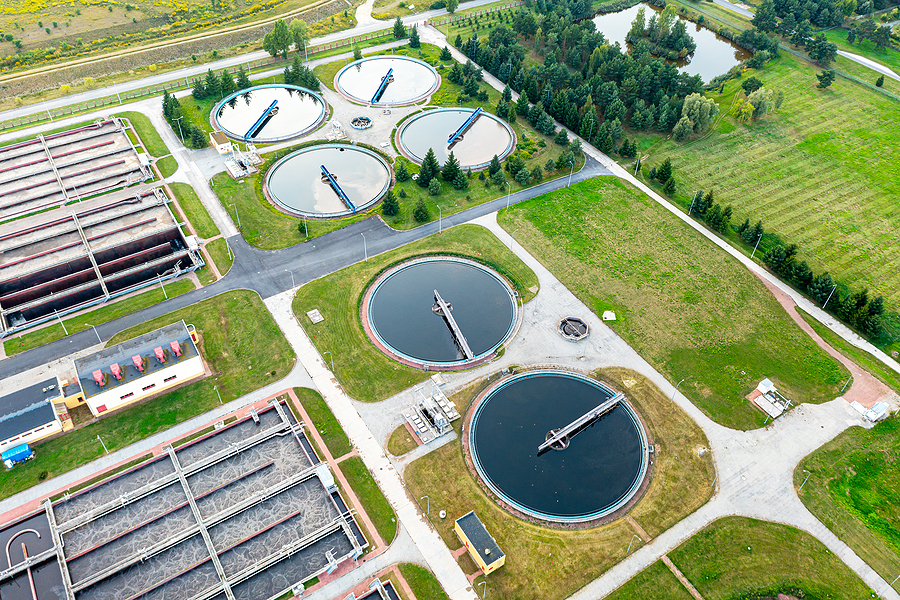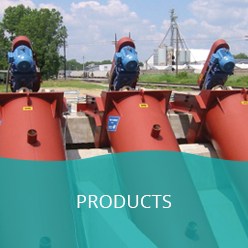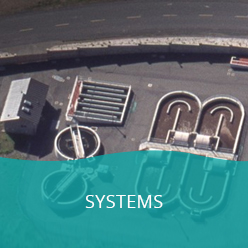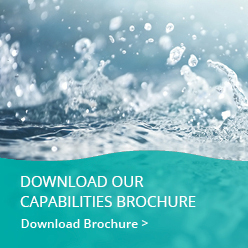The efficient removal of floating debris, scum, and oils is a crucial process for wastewater treatment facilities. Complete removal ensures the facility’s optimal performance and creates a high-quality effluent. Skimmers are key in this process, doing the essential work of removing surface contaminants at various treatment stages.
Skimmers are specialized devices that contribute to improved water quality, treatment efficiency, and longer lifespans of facility equipment. When selecting a skimmer for wastewater treatment, there are several factors that need to be considered and Lakeside Equipment can help you consider the options to make the right choice.
Factors that Matter When Choosing a Skimmer
When considering a skimmer for your wastewater treatment facility, it’s important to understand exactly what you need for optimal performance. As a leader in water treatment equipment solutions for more than ninety years, Lakeside Equipment has helped wastewater facilities through decades of advancements. These are what we consider to be the first details to consider.
Plant Capacity & Flow Rate
The size and capacity of the wastewater treatment facility should be the first consideration when selecting a skimmer. The flow rate, in particular, is critical in determining the types and sizes of skimmers that are needed.
For example, a facility that is processing millions of gallons of wastewater each day will require different skimming solutions than a smaller, local plant that handles lower volumes.
The reason for this is that the skimmer must be capable of handling peak flow rates, while not compromising performance. Choosing a skimmer for a slower flow rate means it will become overwhelmed during high-flow events.
On the opposite end of the spectrum, a skimmer that is oversized for the capacity will not only cost more, but it will frequently operate inefficiently, even during normal conditions.
Wastewater treatment engineers should analyze the facility’s historical flow data including seasonal variance and peak events to determine the most accurate skimmer capacity.
Facilities that are projected for growth should also factor in the potential for expanded capacity since operating a too-large skimmer short term may still be more cost-effective than replacing equipment later.
Wastewater Characteristics
The composition of the wastewater stream will factor significantly into skimmer selection. Wastewater treatment plants in different industries will deal with varying types and amounts of floating materials, oils, and scum.
For example, treatment facilities that handle wastewater from food processing facilities will have wastewater with higher amounts of oils and greases, while municipal plants are more likely to deal with lighter floating debris and foam.
Here are a few wastewater characteristics to consider.
- The density and viscosity of floating materials
- Seasonal changes that change the wastewater composition
- Whether abrasive or corrosive materials are present
- Temperature variations in the wastewater
Environmental Conditions
The next consideration is the environmental conditions. The environment can have a significant impact on skimmer performance and longevity. In outdoor installations, it’s important to consider factors such as extreme temperatures, heavy precipitation, and wind that can potentially affect how efficiently a skimmer operates and its future maintenance needs.
In colder climates, skimmers need to be able to prevent freezing and continue operating even at low temperatures.
Floating Vs Fixed Slimmers
Wastewater treatment skimmers can be placed into two main categories – floating and fixed.
Floating Skimmers
Floating skimmers are a versatile solution that can automatically adjust to varying water levels. These skimmers float on the surface of the water and are connected to a pump or removal mechanism. The floating design ensures consistent contact with the water surface, which is automatically going to maximize collection efficiency.
Advantages of floating skimmers include:
- Automatic adjustment to water level fluctuations
- Effective collection in variable conditions
- Easier to access and maintain
- Generally lower installation costs
The drawback of floating skimmers is that they can sometimes require more frequent maintenance due to the fact that the parts are moving and can be more susceptible to damage from debris.
Fixed Skimmers
Fixed skimmers are mounted at a set height and are best suited for skimming at consistent water levels. These systems are generally stronger and require less maintenance compared to floating systems. Fixed skimmers work best in water treatment stages where water levels are relatively consistent.
Advantages of fixed skimmers include:
- Highly durable
- Generally require less maintenance
- Cost-effective for relatively stable water levels
While fixed skimmers have strong advantages, they do lose some of their effectiveness when water levels fluctuate outside of their optimal operating range.
Best Practices for Implementing a New Skimmer for Your Wastewater Treatment Plant
Successful implementation of a new skimmer system requires proper installation, but also attention to other considerations.
For example, proper positioning, maintenance access, and how the skimmer integrates with existing systems are all factors to consider when implementing the new equipment. Professional implementation can ensure that the skimmer is implemented correctly for flow rate optimization and efficient removal of debris.
Site Assessment: Before choosing a skimmer, conduct a thorough evaluation of the facility’s needs and conditions, which should include:
- Analysis of flow patterns
- Review of existing infrastructure
- Considerations of access for maintenance
- Consideration of future growth
Performance Testing: After implementation, it’s important to frequently assess how efficiently the skimmer is working through regular performance reviews. Train staff on how to monitor and assess efficiency and performance, as well as how to troubleshoot and recognize the signs of sub-optimal performance. Proper documentation and reporting will help identify concerns, pinpoint if maintenance or adjustment is needed, and keep all team members on the same page.
Installation: Proper installation is key for optimal skimmer performance. This includes proper alignment and leveling, and that the equipment is installed according to manufacturer specifications. A professional wastewater treatment equipment service provider can help ensure that the process is completed correctly and provide documentation of installation procedures. If possible, plan for installation at a time that we create minimal disruption of daily operations.
Maintenance: The key to ensuring optimal performance from wastewater treatment equipment over the long term is to plan for regular maintenance right from the beginning. Regular maintenance helps to ensure that the equipment’s lifespan will be maximized. This includes establishing a regular inspection schedule, training staff on cleaning and maintenance procedures, keeping an inventory of essential parts for minor maintenance repairs, and keeping proper documentation of all maintenance activities.
Making the Right Investment
Selecting the right skimmer for your wastewater treatment plant is something that deserves careful consideration of everything from the facility’s operational requirements, volume, long-term maintenance needs, and potential future growth. Choosing the right skimmer means evaluating the needs of the wastewater treatment facility, considering the available options, and implementing best practices for installation and maintenance.
At Lakeside Equipment, we’re here to help you through this process. We’re the leading experts in wastewater treatment equipment, with a team that is here to answer your questions and help you find and implement the skimmer for your needs. Contact us at Lakeside Equipment today to learn more.








